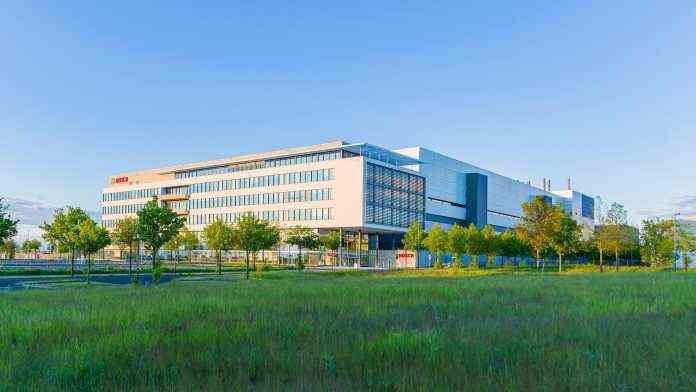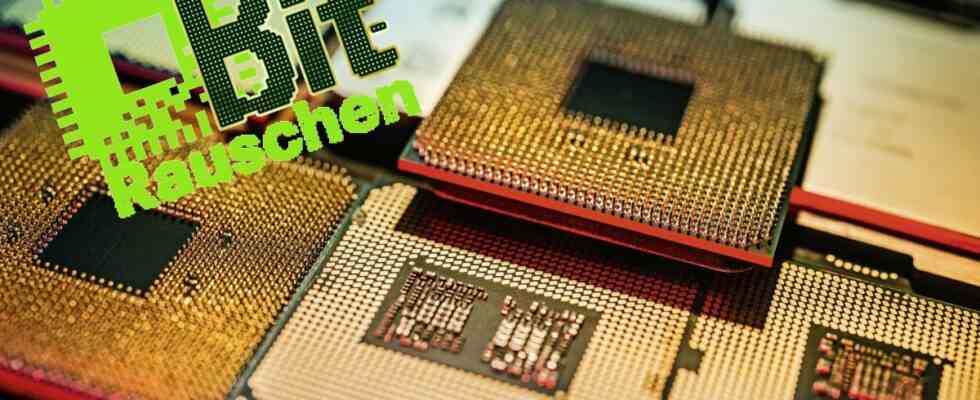The past two years have been shaped by the chip crisis. Now there are first signs that the shortage of many types of chips will soon be a thing of the past. The reason for this, however, is not semiconductor factories that are suddenly springing up out of the ground, but rather the expected decline in demand, especially for consumer electronics and household appliances. In view of inflation, the weak euro exchange rate and the general uncertainty caused by the Ukraine war and the pandemic, private households will buy less.

According to the market researchers from Trendforce, numerous manufacturers are currently canceling wafer orders from large contract manufacturers such as TSMC, Samsung, UMC and Globalfoundries (GF). This applies above all to plants in which 200 millimeter wafers with rough structures from 110 to 350 nanometers roll off the assembly line. These are chips for display drivers, image sensors and power management circuits (PMICs). On the other hand, 300 millimeter fabs, which produce processors, graphics and AI accelerators in 4 to 7 nanometer technology and 5G radio technology, chipsets and cheap smartphone SoCs in 10 to 19 nanometers, continue to run close to the capacity limit.
However, it will still be many months before noticeably more notebooks, desktop PCs, game consoles and cars are available from dealers, because wafer orders are placed well in advance. In addition, there are problems with the logistics and bottlenecks due to a lack of staff are still acute.
At the moment, business for chip manufacturers is still running like clockwork. Taiwan-based contract manufacturer TSMC reported net income of $8.1 billion in the second quarter of 2022 on sales of $18.2 billion. Sales increased by 37 percent compared to the same period of the previous year. Half of the income went to the account of 5 and 7 nanometer chips, which are in demand above all with major customers such as AMD, Apple and Nvidia.
More money for car chips
In order to satisfy the long-term growing demand for semiconductors in automobiles, Bosch intends to invest a total of three billion euros by 2026 – a large part of it in Germany. The chip factory in Dresden, which went into operation last year and cost a billion euros, is to be expanded for 250 million euros. This doubles the number of jobs to 700. At the Reutlingen site, a further EUR 400 million will be invested primarily in the production of silicon carbide chips. These are used, among other things, in the power electronics of electric and hybrid cars. For these applications, Bosch is also researching gallium nitride chips for voltages of up to 1200 volts, which promise lower switching losses with less weight.

Bosch is expanding the one-year-old 300-millimeter fab in Dresden for 250 million euros to satisfy the automotive industry’s hunger for semiconductor chips.
(Image: Bosch)
Intel’s next CPU generation “Raptor Lake” for desktop PCs is due this fall. Several entries in benchmark databases show that the launch of the Core i 13000 processors is not far off. According to this, a pre-series model of the Core i9-13900K with eight performance and sixteen efficiency cores should calculate almost 40 percent faster in the rendering benchmark than the predecessor Core i9-12900K (8P + 8E cores).
However, potential buyers of these CPUs should start saving now. According to a report by Nikkei Asia, Intel recently informed PC manufacturers that it will raise prices for processors and other product groups such as WLAN adapters by up to 20 percent in the coming months. Intel thus passes on the manufacturing costs that have risen due to inflation, such as those for chemicals. The chip manufacturer had already indicated price increases in April and, according to its own statement, is now informing the manufacturers of the amount.
Return of a vulnerability
Nevertheless, an exciting race is on the horizon for autumn, because AMD is launching the Ryzen 7000 processors with a completely new platform almost at the same time as Intel’s Core i 13000 launch. A still unnamed six-core processor of this generation trumps the 16-core Ryzen 9 5950X in the “Basemark GPU” graphics benchmark by around ten percent. This indicates a high single-threading performance.
With Retbleed, the Specter V2 vulnerability is celebrating an unplanned comeback five years after its discovery. Security researchers at ETH Zurich have been able to prove that it is possible to outsmart the previous countermeasures of the CPU manufacturers AMD and Intel with cleverly structured return instructions.
With the side channel attack, the researchers were able to read data fragments from protected RAM areas. However, this only worked with architectures that were a few years old, such as AMD Zen, Zen+ and Zen 2 as well as Intel Kaby and Coffee Lake, and then only with a few kilobytes per second. The highly complex attacks are mainly relevant for cloud servers on which several isolated instances of different users are running.
There is also a regular podcast on bit noise.
(Picture: c’t 17/22 )
In c’t 17/2022 we examine what artificial intelligence actually achieves today. We present apps and gadgets for the holiday and test bicycle navigation systems so that you never take detours again. Also in the test: energy cost measuring devices, with which you can track down energy guzzlers in the household, web whiteboards for digital meetings and inverters for balcony power plants. You can also find out how the James Web space telescope works in the current c’t.
(chh)


